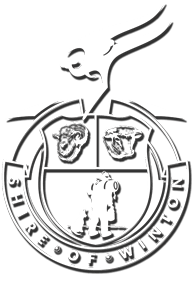Building Design
Sustainable Design at Work
Fossilised Trackways conservation and repair is a new area of expertise. Research is currently underway to test new conservation methods, materials and restoration techniques. In the meantime, it is important to protect the Trackways from further deterioration.
Conservation is the prime function of the Lark Quarry Trackways building. The fossils had been perfectly preserved for 95 million years sealed underground. But exposure to sun, rain, people and wildlife were taking their toll. To stop further damage to the Trackways, the building was designed to:
- Stabilise temperature and humidity fluctuations;
- Stop water running over the tracks; and
- Keep humans and animals off the fragile Trackways.
ESD Principles
The Lark Quarry buildings and infrastructure have been designed using ecologically sustainable design (ESD) principles, for maximum water, waste and energy efficiency.
ESD principles minimise impacts on our local and global environments while benefiting the local community, by:
- Using local materials and labour where possible
- Choosing materials that have low embodied energy and are reusable or recyclable (embodied energy is the energy used to create or manufacture materials)
- Collecting water from roofs and processing waste water on site
- Installing closed system composting toilets which use little water, with the end product disposed of off site or used as fertiliser
- Using power supplied by the grid connected to a solar system
- Using natural daylight, and passive heating and cooling
- Making sure there is minimal impact during construction and re-vegetating with local native plants.
To find out more about how ESD principles were used at Lark Quarry for temperature regulation, water and waste efficiency, energy generation, and reduced construction impacts, download:
Fact Sheet 4 - 'Ecologically Sustainable Design at Lark Quarry' (248.26 KB)





